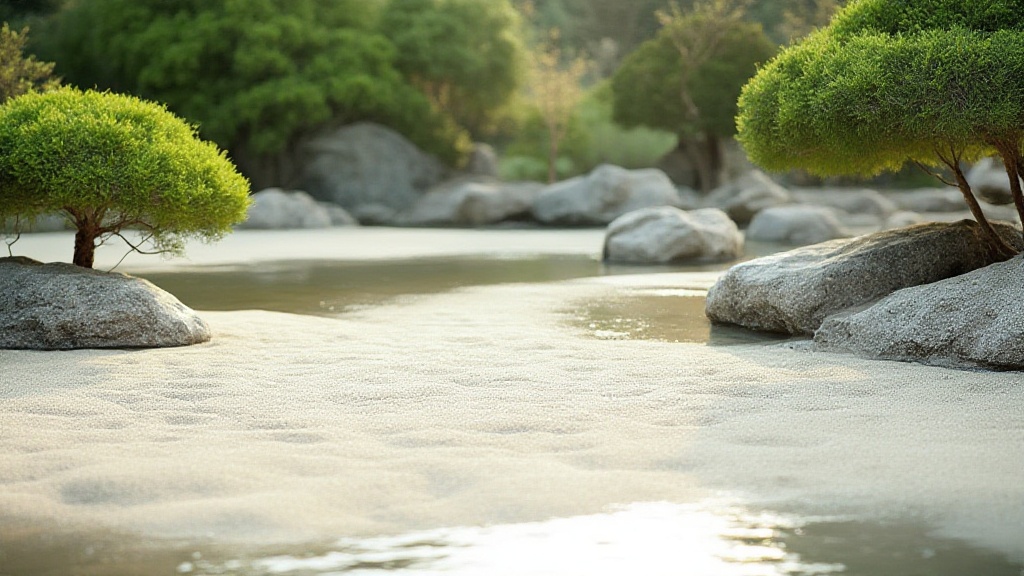
Finding creative relaxation ideas is essential for promoting mental health and emotional well-being. Activities such as painting, journaling, or engaging in hobbies stimulate self-expression and can significantly enhance your mood.
By adopting mindfulness within these creative pursuits, you can transform simple pastimes into effective stress relief strategies.
Regular engagement in these creative activities leads to improved focus, tranquility, and a renewed sense of inner peace.
Exploring Art Therapy For Relaxation
Visual arts serve as a powerful medium for emotional expression, contributing to personal insights and enhancing mindfulness.
Techniques like painting and drawing promote a focus on color, texture, and form, facilitating deeper emotional processing. These activities not only engage creativity but also provide emotional support and relaxation.
Setting Up Your Art Space
To create a calming art space at home, consider the following suggestions:.
- Select a quiet area with ample natural light.
- Organize your art supplies for easy access.
- Incorporate soothing elements, such as soft music or indoor plants, to enhance the ambiance.
By establishing such an environment, you can cultivate a restorative atmosphere that encourages creative engagement and personal growth.
To further enhance your artistic experience, consider incorporating other relaxation techniques such as guided imagery or movement practices like yoga. These methods can complement your art therapy by promoting tranquility and self-care.
Creativity takes courage. – Henri Matisse
Explore the world of art therapy, where you can foster your imagination and engage in expressive arts that promote emotional release and overall mental health.

How Does Mindfulness Enhance Creativity
Mindfulness acts as a catalyst for creativity by sharpening focus and fostering innovative thinking. Practicing mindfulness techniques, such as meditation and breathing exercises, can significantly improve cognitive flexibility, helping individuals break through mental barriers.
Research indicates that engaging in mindfulness activities enhances the brain’s ability to generate new ideas.
A practical exercise involves setting aside ten minutes daily for mindful breathing.
Follow these steps:.
- Find a quiet space.
- Close your eyes and inhale deeply through your nose.
- Exhale slowly through your mouth.
- Focus entirely on your breath.
Consistent practice can stimulate creative outlets and enhance overall mental clarity. By incorporating mindfulness exercises into daily routines, individuals can achieve a more profound sense of creativity while managing stress effectively.
DIY Treatments For Stress Relief
Utilizing DIY treatments provides an effective way to alleviate stress through natural ingredients. Simple herbal remedies like chamomile and lemon balm serve as effective options for promoting relaxation and comfort. A specific DIY recipe for a calming herbal tea involves:
To prepare this herbal tea:
- Combine 1 teaspoon of dried chamomile and 1 teaspoon of lemon balm in hot water.
- Allow it to steep for five minutes.
- Strain and enjoy the soothing beverage.
Incorporating these methods into your routine reinforces self-care practices essential for mental health. Blending DIY treatments with mindfulness exercises creates a holistic approach to stress management and emotional support. As individuals engage in these practices, they can enhance their overall well-being while contributing to personal growth.
Mindfulness and Stress Relief
- Studies show that mindfulness meditation can increase gray matter density in the brain, which is associated with improved emotional regulation and cognitive function.
- Research has found that practicing mindfulness can reduce symptoms of anxiety and depression, leading to better overall mental health.
- Herbal remedies like chamomile and lemon balm have been scientifically validated for their calming effects, making them effective for stress relief.
- Engaging in self-care practices, including mindfulness and DIY treatments, has been linked to increased resilience and improved coping strategies in stressful situations.
The Role Of Self-Expression In Relaxation
Self-expression serves as a fundamental component of emotional well-being, particularly through activities such as journaling and creative writing. These techniques act as essential outlets for emotions, allowing individuals to engage in reflective practices that facilitate emotional clarity and self-awareness.
Engaging in these activities promotes mindfulness and tranquility, which are directly linked to improved mental health outcomes.
Studies indicate that individuals who regularly practice self-expression experience a notable reduction in stress levels.
For those seeking relaxation through writing, consider this journaling prompt: Describe a recent experience that made you feel relaxed and at peace. Reflecting on positive moments enhances emotional release and contributes to overall stress relief.
Benefits of Journaling for Mental Health
Journaling allows for personal growth and emotional support. Some key benefits include:.
- Emotional release: Writing down thoughts and feelings can alleviate stress.
- Enhanced focus: Reflective writing encourages focus shifting from anxiety to positive thoughts.
- Mindfulness practices: Engaging in journaling fosters a sense of mindfulness, allowing deeper self-discovery.
Gardening As A Form Of Nature Therapy
Engagement with nature through gardening presents significant therapeutic benefits that positively impact mental health. Gardening serves as a potent form of nature therapy, effectively promoting relaxation while reducing stress levels. Engaging with plants not only elevates mood but also cultivates a heightened sense of connection to the environment. This therapeutic activity can be particularly beneficial for those experiencing emotional challenges.
Choosing Beginner-Friendly Plants
For individuals new to gardening, selecting low-maintenance plants can enhance the experience. Some ideal choices include:.
- Succulents: These require minimal water and are easy to care for.
- Herbs: Basil and mint are practical options that not only thrive with little effort but also offer culinary benefits.
- Pothos: This resilient vine is perfect for indoor gardening and requires basic light conditions.
Creating a calming gardening space allows individuals to practice mindfulness while engaging with their green companions. This connection to nature further supports relaxation practices, fostering inner peace and tranquility.
Self-Expression and Gardening
- Studies show that expressive writing can lead to a 20% reduction in stress levels.
- Gardening has been linked to lower levels of cortisol, a stress hormone.
- Engaging with nature through gardening can improve mood and overall mental well-being.
- Mindfulness practices, such as journaling and gardening, enhance emotional resilience and self-awareness.
How Can Music Therapy Help You Relax
Exploring music therapy reveals its profound impact on relaxation and mood enhancement. Music therapy, often characterized by the use of specific tunes and rhythms, can significantly influence emotional states, thus encouraging relaxation.
Studies show that genres such as classical music and soothing ambient sounds effectively lower stress levels.
These auditory experiences connect deeply to earlier discussions on sensory engagement, reinforcing how sound influences overall well-being.
To help foster tranquility, a curated playlist featuring soothing tunes from artists like Max Richter or Brian Eno can be particularly beneficial. Listening to these calming genres can create a personal sanctuary for relaxation.
Journaling For Emotional Release And Clarity
Writing can unlock powerful emotional insights and clarity.
Journaling serves as a valuable tool for processing feelings, supporting self-expression and personal growth. The act of writing encourages reflection, helping individuals understand their emotions while enhancing mindfulness.
Structuring a journaling routine can enhance its effectiveness; consider the following tips:
- Daily Prompts: Set themes to guide your entries.
- Reflective Writing: Dedicate time to explore your thoughts.
- Incorporate Techniques: Utilize relaxation techniques such as mindful breathing.
Incorporating these elements can enrich the journaling experience, combining emotional release with creativity and personal insight. By embracing creative outlets like journaling, you can foster tranquility and support personal development.
Music Therapy and Journaling
- Music therapy can lower cortisol levels, which are associated with stress.
- Research indicates that listening to calming music can improve sleep quality.
- Journaling can lead to a 50% reduction in symptoms of anxiety and depression.
- Mindfulness practices, including journaling, enhance emotional regulation and resilience.
Benefits Of Guided Imagery For Inner Peace
Guided imagery, a powerful mental technique, promotes relaxation and reduces stress effectively. This method leverages visualization, an essential element of mindfulness practices, to cultivate a state of inner peace.
Engaging in guided imagery regularly can significantly lower stress levels, as it allows individuals to temporarily escape into calming mental landscapes.
This approach not only enhances emotional stability but also creates a strong connection to both visualization techniques and mindfulness.
Experiencing Quick Stress Relief
To experience quick stress relief, consider incorporating a guided imagery exercise into your routine.
First, locate a quiet space free from interruptions. Close your eyes, and visualize a serene environment, such as a tranquil beach or a lush forest.
Engage your senses: imagine the soothing sounds of gentle waves, the fresh scents of pine trees, and the soft sensations of warm sand beneath your feet. This vivid mental exercise can create a profound impact on your relaxation experience.
By utilizing these relaxation techniques regularly, individuals develop a resilient mindset that fosters ongoing emotional support and personal growth.
“Guided imagery can serve as a gateway to tranquility, enabling deeper connections to one’s inner self and surrounding nature. ”
Incorporating guided imagery into your daily routine can enhance overall mental health and promote a state of well-being.
The practice not only offers immediate stress relief but also encourages long-term benefits, such as improved focus and emotional release.
By embracing this holistic approach, individuals can cultivate a sense of peace and engage in meaningful self-discovery.
| Benefits of Guided Imagery | Details |
|---|---|
| Promotes Relaxation | Guided imagery effectively reduces stress and enhances relaxation. |
| Enhances Emotional Stability | Regular practice fosters a strong connection to visualization and mindfulness. |
| Quick Stress Relief | Engaging in guided imagery can provide immediate stress relief through vivid mental exercises. |
| Long-term Benefits | Improves focus and encourages emotional release, contributing to overall mental health. |
